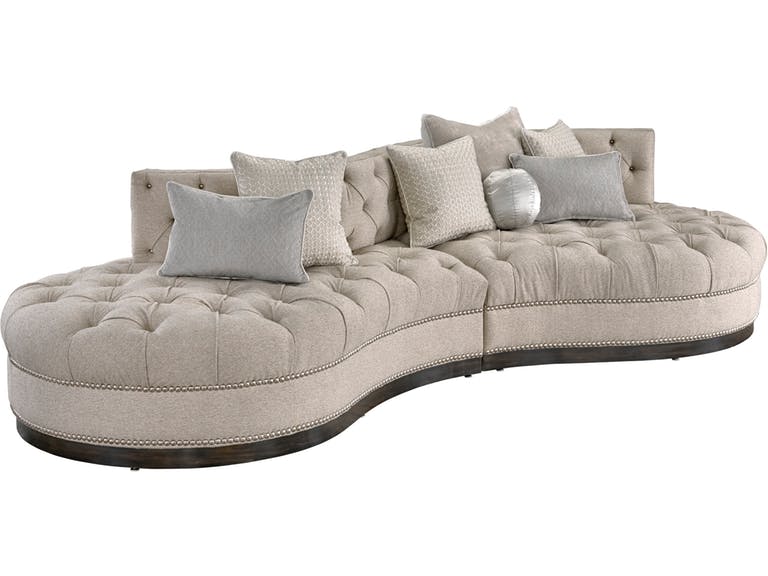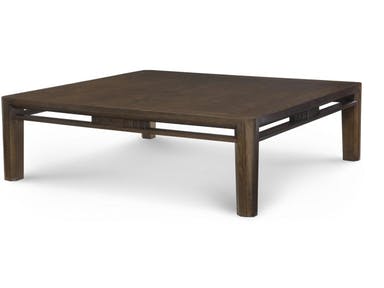Monday, October 22nd, 2018

Marge Carson Living Room Zen Sectional
We all live in a stressful world. This lack of genuine tranquility in people’s lives is one of the reasons why more and more homeowners want to create a habitat that does not need an airfare to go to. The Zen interior design has principles that have increasingly been used by many homeowners.
Why could this be?
The word Zen, itself, is in reference to meditation. The Japanese use this term when they are also referring to relaxation, balance, and harmony.
Zen may not be a widely recognized interior design but it does have its own audience. There are also rules to follow with this sort of style. This is also a style that is linked with purity, minimalism, and living a simplistic life.
If you fancy having a Zen home, then here are some rules to commit to memory –
Earthy Hues Only Please
The Zen-inspired style is all about the use of natural hues and soft tones. Use a lot of grays, white, shades of beige, a touch of pink beige, and other such soft hues. These colors are soft enough to induce calmness.
It is important to consider chromatic harmony between all the design elements. Be careful also in establishing visual seamlessness especially between the furniture, flooring, and the walls.
You also need to fuse a dominant color with textured fabrics like moleskin, for instance. Don’t be afraid to create diversity by fusing two matching hues. Play also with a degradation of your favored color.
Lots of Natural Light
If you want to set up a truly relaxing home, then discard all the harsh lights that are currently displayed. Have these replaced with the most calming lights such as candles or nature-inspired lighting fixtures.
Set up various sources of light so that you can control the amount of intensity on different areas. Never project a direct light from your ceiling. Be sure to take advantage of wide windows in letting in ample sunlight.
Bare Furniture
Straight, simple lines characterize Zen furnishings. These pieces do not come with excessive ornamentation but each has a high quality. The materials that were used to manufacture these pieces are all natural. This also brings a sense of relaxation and warmth to your Zen home.
As for the storage pieces such as the cupboards, closets, and drawers, these can look livelier when they match the color of the interior.
The Zen Bedroom
Since the bedroom is the most naturally Zen among all the rooms in your home, you should concentrate in designing this. Begin by placing the bed closest to the natural source of light but never place it right in front of a passage area.
The bed’s height must be one that you’re comfortable with, although, higher beds tend to feel more comfy. Choose upholstered or leather.
Never over decorate your bedroom. You may use fleece, wool or mohair as covers. Throws are allowed but remember not to exaggerate. Find pillows with different sizes.
Be sure to invest on an armchair if your reading nook is also in your bedroom. This has to be a super comfy seating unit that still comes with the simple lines that are the ultimate requirement to every Zen home.
Few Ornaments
For your wall décor, the rule is also the same – keep it simple. Never create a gallery of paintings or framed photographs when you can just actually hang a single piece. If you can, cover your book collection with monochromatic paper.
Add Scents
You can also enhance the Zen feel in your home by enhancing each room with natural scents. Ylang Ylang and Lavender are popular calming scents.
Tags: Japanese style, McCreerys, McCreerys Home Furnishings, Zen, Zen interior, Zen interior design, Zen interiors, Zen style
Posted in Interior Design 101, Interior Design Elements, Interior Design Themes | Comments Off on Zen In and Out
Saturday, September 16th, 2017

Century Furniture Living Room Akimi Coffee Table AE9-601
Did it ever occur to you that most Japanese homes are actually small? While this is so, you would not hear Zen enthusiasts ever complaining of not having ample space. And even when these homes are situated close to one another, natural light, safety, and privacy are all still kept intact.
Most urban Japanese homes are not single-family homes. In fact, their apartments are small yet you will still see the beautiful traditional features like step-up entryways and the deeply-relaxing soaking tubs.
Even Westernized Japanese style homes have one Japanese room complete with tatami flooring. This means that the traditional Japanese elements are still widely incorporated by many Western architects. The essential concepts are the following –
Gates
When you go to Japan, one of the things that you would immediately notice are the gated entryways. This is because many residential streets do not have sidewalks. The line of demarcation, therefore, rests on the property’s gate.
The gate is also traditionally roofed especially in Kyoto, Japan. It is also common to find cherry trees in the garden that greets the visitors once they are welcomed into the property.
Walls
Since there are gates, naturally, there are walls. The Japanese always make their properties secure and private so they set up walls right at the property lines. The most common material is the concrete block whether the home is situated in a quaint village or in a city.
There are also bigger homes with stone walls that are topped with wooden fences. There are even those that are topped with actual trees.
Tiled Roofing
Japan is constantly bombarded with rain, hence, their roofs are designed for water drainage. The broad eaves allow the opening of exterior doors without letting in unwanted rain splashes.
Step-Up Entryway
This is that transitional space between the interiors of the home and the outdoors. This is that very spot where the shoes are exchanged for the slippers. Called the genkan, this is also where a shoe cupboard can be placed also some decorative objects like art, flowers or ceramics.
This area may also face the tokonoma or the alcove where artwork or scrolls are prominently displayed. Ikebana or flower arrangements may also be featured there.
North-South Views
Japanese houses are often set up north-south, meaning, the house gets a steady amount of sunlight during the day. The outdoor views are often mountains or lovely water features.
Would you believe that natural light is actually a human right in Japan?
Sliding Doors
The lovely louvered doors are also essential parts of every Japanese home. These also feature slatted windows which are common in live-work homes.
Wood and Straw Everywhere
No Japanese home can be called such without an element of wood in it. Japanese homes often stain their wooden features but they never paint them. It is crucial to feature the wood grain insomuch that they can even feature an entire tree as a roof beam.
Another important material in Japanese interior design is straw matting. On any tatami flooring, a type of grass called igusa is woven. This is used to keep the house cool during the summer months and warm during winter.
Straw matting can be a tad costly but they are known to last for many, many years. Remember how the Japanese never use their dirty shoes indoors? This is the reason why the tatami flooring remains undamaged for many years.
You can also follow this same concept. To add to the Zen atmosphere, you can also bring in standard rectangle mats. Get the ones that have black cloth or brocade edges.
Multi-Purpose Rooms
Traditional Japanese homes also have multiple purposes for every room. The futon or traditional bedding can be folded during the day to reveal a larger room where people can relax, sit or even dine.
Tags: Japanese design elements, Japanese interior design, Japanese interiors, Japanese style, McCreerys, McCreerys Home Furnishings
Posted in Green Living, Interior Design 101, Interior Design Elements, Interior Design Themes | Comments Off on Traditional Japanese Habitat: Where Privacy, Nature, and Harmony Combine
© McCreery's Home Furnishings | All Rights Reserved | Privacy Policy